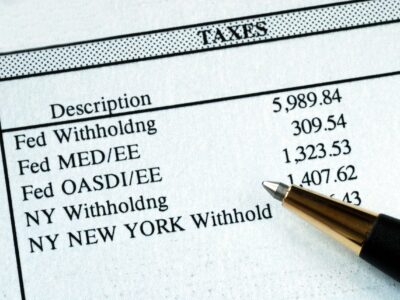
An asset is anything a company owns of financial value, such as revenue (which is recorded under accounts receivable). Notes Payable – A note payable is a long-term contract to borrow money from a creditor. The most common notes payable are mortgages and personal notes.
The long-term debt ratio

Although average debt ratios vary widely by industry, if you have a debt ratio of 40% or lower, you’re probably in the clear. If you have a debt ratio of 60% or higher, investors and lenders might see that as a sign that your business has too much debt. Bonds Payable – Many companies choose to issue bonds to the public in order to finance future growth. Bonds are essentially contracts to pay the bondholders the face amount plus interest on the maturity date. If the company can reasonably estimate the cost of warranty claims based on historical data, it should record a retained earnings warranty liability.
Company
- A contingent liability only gets recorded on your balance sheet if the liability is probable to happen.
- Keep up with Michelle’s CPA career — and ultramarathoning endeavors — on LinkedIn.
- For overpayments, a reversing entry can nullify the impact on the liability account.
- If the business spends that money to acquire equipment, for example, the purchases are assets, even though you used the loan to purchase the assets.
If you’re unable to repay any of your non-current liabilities when they’re due, your business could end up in a solvency crisis. When it comes to short-term liquidity measures, current liabilities get used as key components. Here are a few metrics and key ratios that potential investors and management teams look at to perform a financial analysis. Here is a list of some of the most common examples of current liabilities. So what are the different types of liabilities in accounting? Let’s take a closer look at everything that you need to know.
Liabilities Shown in Financial Statements
Liabilities are an effective way of getting money and is preferred over raising capital using equity. Though taking up these finances make you obliged as you owe someone a significant amount, these let you accomplish the tasks more smoothly in exchange for repayments as required. Shopping for small business accounting software can be painful and confusing.
Liabilities vs Expenses

Negative liability on financial statements can create interpretive challenges for accountants and stakeholders. Understated liabilities can skew financial ratios, such as the current ratio and quick ratio, portraying an inaccurate picture of liquidity. This misrepresentation can mislead analysts and investors assessing the company’s ability to meet short-term obligations. There are also cases where there is a possibility that a business may have a liability. You should record a contingent liability if it is probable that a loss will occur, and you can reasonably estimate the amount of the loss.
- Liabilities impact negatively on the financial net worth of a business or company, while assets impact positively and increase the financial net worth of a business or company.
- Here are a few quick summaries to answer some of the frequently asked questions about liabilities in accounting.
- A liability is a legally binding obligation payable to another entity.
- And if you have more debt, then you’re going to have higher liabilities.
- Understanding liabilities is essential for effective financial management and decision-making.
This article aims to expand your knowledge about the definition, type of liabilities, and various examples of liabilities. Liabilities don’t have to be a scary thing, they’re just a normal part of doing business. Because chances are pretty high that you’re going to have some kind of debt. And if your business does have debt, you’re going to have liability accounts liabilities. A contingency is an existing condition or situation that’s uncertain as to whether it’ll happen or not.
In today’s uncertain marketplace, accurate, timely reporting of contingencies helps business owners and other stakeholders manage potential risks and make informed financial decisions. Contact us for help categorizing contingencies based on likelihood and measurability and disclosing relevant information in a clear, concise manner. Mortgage payable is a type of long-term debt for purchasing property for business activities.

But not all liabilities are expenses—liabilities like bank loans and mortgages can finance asset purchases, which are not business expenses. Liabilities are one of 3 accounting categories recorded on a balance sheet, along with assets and equity. Liabilities are classified as current, long-term, or contingent. Long-term liabilities are debts that take longer than a year to repay, including deferred current liabilities. Contingent liabilities are potential liabilities that depend on the outcome of future events.
This liability is recorded on its balance sheet, showcasing the amount Accounting for Churches owed and the agreed-upon terms for repayment. Over time, as the company fulfills its obligations, the liability decreases. Liabilities are an operational standard in financial accounting, as most businesses operate with some level of debt. Unlike assets, which you own, and expenses, which generate revenue, liabilities are anything your business owes that has not yet been paid in cash.

